|
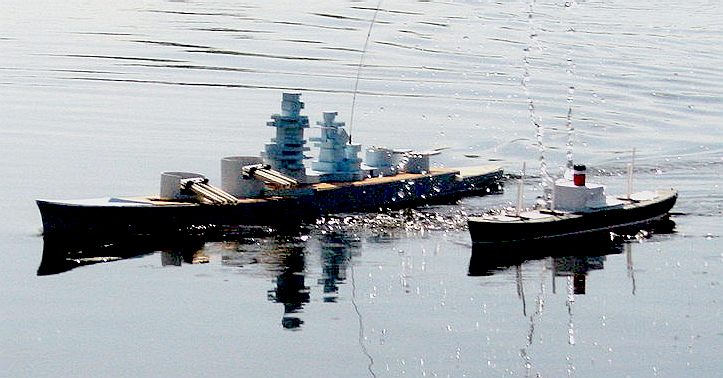
VNS Verdun takes a shot at USS Nathaniel Greene at the 2007 North American Big Gun Open.
Model warship combat is an international club activity, in which participants construct
radio-controlled scale models of actual warships, most commonly those built by various nations during the early portion of the 20th century prior to 1946 such as the USS Des Moines, HMS Dreadnought or German battleship
Bismarck. These models are armed with pneumatic cannons, and fight against one another on ponds and lakes. Model warship combat is sometimes considered to be a form of Naval Wargaming, but can also be considered a water-based version of Robot Combat since much of the internal systems and concepts are the same with similar radio control electronics, and in some cases possess similar pneumatics systems.
The sport is predominately divided into 'Big Gun' and 'Fast Gun' (or 'Small Gun') clubs. Both 'Big Gun' and 'Fast Gun' formats host annual national/international inter-club events. There are two major 'Fast Gun' clubs, International Radio Control Warship Combat Club (IRCWCC), and Model Warship Combat, Incorporated (MWCI). Both clubs have events known as "NATS". 'Big Gun' battlers have the annual event known as the North American Big Gun Open (NABGO), and - since 2008 - the annual Big Gun Robotic Warship Combat open invitational at California Maker Faire.
The Australian Battle Group (AUSBG) has two annual National Battles, held in January and June.
HISTORY
OF THE SPORT Radio controlled combat of warships owes its popularity to a small group of men living in Texas (USA) in the late 1970s. The founding fathers of the hobby are Stan Watkins, D.W. Fluegel, and Jeff Poindexter. Back in the day, these men "toyed" with the idea of using radio controlled ships and equipping them with some kind of cannon so that they could then engage in combat.
After much efforts, Stan created the "Mark I" cannon using an odd variety of plumbing parts and pieces. In those days, freon was used as a propelling agent and often their engagements resulted in little if any damage. After some time, and more engineering, they were able to "sink" an opponent in combat by shooting steel balls through balsa hulls. Organized groups formed very quickly after this achievement, with the formation of the IRCWCC, and Big Gun groups starting up in 1982 with the formation of NASWCA.
From this inauspicious beginning and after years of technological advances, the hobby has improved dramatically in both reliability and playability. Many different groups having formed, fighting scale model warships ranging from the reasonably rare 1:48 scale to the most common 1:144 scale, with different and largely regional variations on the rules used. MODEL SCALE AND MATERIALS
While some early vessels were built in 1/150 scale, scales have become standardized with the most common construction scale of 1:144, although 1:96, 1:72 and 1:48 scale modeling groups also do exist. The majority of hulls are constructed from either fiberglass (with penetration windows cut into it), or scratch built with wood ribs. The exteriors of the ship's hulls are sheeted with
balsa wood, which allows the relatively low velocity cannon projectiles to penetrate them to let in some water, with the idea of sinking the model if the on board bilge pumps can't compensate for the rate at which water enters the hull.
Superstructures are often constructed with a combination of lightweight wood, plastic sheet, thermoset plastic resins, and corrosion-resistant metals. Smaller vessels such as light cruisers and destroyers often incorporate less-durable but lighter superstructure construction in order to maximize the displacement available for weapons systems. Other than the balsa skin, the models typically escape real damage, and can be patched and turned around in typically 15–30 minutes. CLUB
FORMATS - BIG GUN
Unlike Fast Gun clubs, Big Gun clubs operate based upon a loose confederation, with each club reserving the ability to establish and maintain its own rules, provided that they coincide with the spirit of Big Gun Model Warship Combat. With versions in 1/48, 1/72, 1/96, and 1/144 scale, Big Gun Model Warship combat clubs have rules that make provisions for cannon caliber and armor thickness to be scaled according to that which existed on the prototype vessel. Big Gun Model Warships allow weapons to be installed in rotating turrets as they were mounted as the prototype historically. Damage Control is accomplished via a centrifugal bilge pump capable pumping a regulated volume of water out of the hull. The volume allowed is based on the prototype ship's displacement. Typically the flow rate varies from 30 gallons per hour (GPH) for the smallest ships to 90GPH for the largest ships.
Big Gun clubs are largely descended from the now defunct "North American Warship Combat Association" (NASWCA) dating back to late 1981/early 1982.
CLUB FORMATS - FAST or SMALL GUN
Principally known as Fast Gun by its members due to few restrictions on rate of fire, this format is sometimes also identified as Small Gun because of its exclusive use of .177" (BB) caliber guns. About 80% of active clubs are of the fast gun variety, in which all ships are built in 1/144 scale and use .177" caliber guns, which in most cases are installed in fixed mounts but may rotate depending upon ship class. Additionally, all ships are fitted with a standardized 1/32" thick balsa wood 'Armor' to yield an easily penetrable hull. Damage control is accomplished through the use of centrifugal bilge pumps fitted with either a 1/8" or 1/16" diameter flow restricter. The clubs that follow this format of combat include the International Radio-Controlled Warship Combat Club (IRCWCC) and Model Warship Combat, Incorporated (MWCI).
A subset or adaptation of small gun is known as Treaty Combat. Treaty Combat, also abbreviated simply as Treaty, incorporates uniform caliber weapons, armor, and combat units in a way similar to that defined in IRCWCC or MWCI rules; however, speeds and pump capacities are limited based upon the prototype vessel and displacement, respectively. Thus, Treaty Combat incorporates some of the reduced-cost aspects of the Fast Gun format with some of the scaled characteristics of Big Gun. DESIGN
CONVENTIONS & MODEL CONSTRUCTION Extensive design conventions exist to provide that the fighting effectiveness under various conditions remain proportional to the prototype vessels. These conventions also dictate safety features as well as mandating design features to allow for recovery of defeated vessels.
The model warships are fully workable, with small electric motors or servo-operated sails for propulsion, working steering systems actuated typically using servos, and are generally armed with self-reloading pneumatic cannons.
The models cannot be purchased as many scale models can, from a company, with everything in one box. They always include a degree of scratch building. There are, however, several suppliers that sell many of the necessary parts for construction. For example, Strike Models, and Battlers Connection.
MECHANICAL SYSTEMS
While many models use a combination of switches and/or relays physically actuated by servos to control the propulsion system, most newer models now use either Electronic Speed Control units or solid-state switching boards such as those found in
Robot combat, greatly reducing the complexity of the wiring of the propulsion system as well as overall complexity of design. Propulsion is achieved through the use of electric motors coupled to shafts passing through stuffing tubes driving semi-scale propellers. All active mechanical systems are required to be operated via electrical or pneumatic means. Banned are any and all mechanisms relying upon chemical combustion which could contaminate the water with
fuels, oils, and other biologically toxic chemicals.
WEAPON SYSTEMS
Cannons use steel balls ranging from .177" to .25" in diameter as projectiles, and typically CO2 or compressed air is used as the working gas for propellant. As of 2009, a small handful of small Big Gun ships were equipped with cannons powered by compression springs. In Big Gun combat, club rules frequently include provisions for the arming of torpedoes, represented through the use of fixed cannon firing 0.25" diameter projectiles. Although individuals have attempted to construct self-propelled 0.25" diameter
torpedoes, they have yet to be formally documented or demonstrated in use. Additionally, vendors have demonstrated working prototypes of weapons control systems suitable for Big Gun combat to enable multiple turrets on a single vessel to be coordinated as a single weapons battery to produce converging weapons fire at a given vector and range from the vessel so equipped. Pyrotechnics are specifically prohibited from use for weapons to protect the safety of people and animals in addition to preventing environmental contamination. 

JOHN
DRAIN'S TORPEDOES - These superb model torpedoes were made with gearbox
(single motor) and dual electric motor contra-rotating propeller versions.
The dual motor version is shown here. There is though no charge built into
the design. Imagine what damage a 4/10 cartridge would inflict on even a
large model battleship. These fish go live once moved away (launched) from
a magnetic reed switch, at the same time arming the machine, in this case
simply switching on the motor circuits.
TORPEDOES
Torpedoes were developed specifically to give smaller ships, such as destroyers, a weapon they could carry into combat that had a reasonable chance of hurting a larger vessel such as a
battleship. The first torpedoes were single-shot non-reloading affairs made from brass tubing and fittings. They were loaded with .243 caliber rifle bullets. Cotton wadding was used to hold the bullets in their tubes and to provide a gas check. These torpedoes worked very well and proved to be extremely effective. So
much so that in the hands of experienced skippers they became one-shot ship
killers. They caused large holes in a ship, and you can imagine if more
that one fish was fired, it causing holes 2" x 2" to 2" x 4" for each
launch, that a battle would soon be over. These size holes were not uncommon when using these type of torpedoes.
As soon as these torpedoes proved themselves in the destroyers, other larger ships wanted
them. Eventually a reloading version of this torpedo was developed for installation on larger ships.
Battles were always decided by torpedo hits and not by gun fire. Because of the construction of
model ships at the time coupled with the excessive destructiveness of the then current .243 systems,
clubs decided to abandon this style of torpedo and attempt to return to
gaming dominated by gun fire. All the existing systems were adapted to fire two Ľ" ball bearings per salvo.
As a modeler, you will realize that modern ships all depend on torpedoes
and missiles. Guns, are well and truly out of the picture, except for
frightening off pirates and the like, instead of sinking them.
SHIP
TO SHIP and SURFACE TO AIR MISSILES (SAMs) The
enactments, so far are more WWII simulations, and so have not included any
naval engagement where missiles have been used. There are though many
examples of ships being sunk with missiles, the most famous of which was
HMS Sheffield having been struck by an Exocet missile during the Falklands
conflict. There
is thus much scope for the development of SAM and cruise missiles that can
be made to seek a target quite cheaply using infra-red and other motion
sensors, such that the cost need not be prohibitive for model
makers.
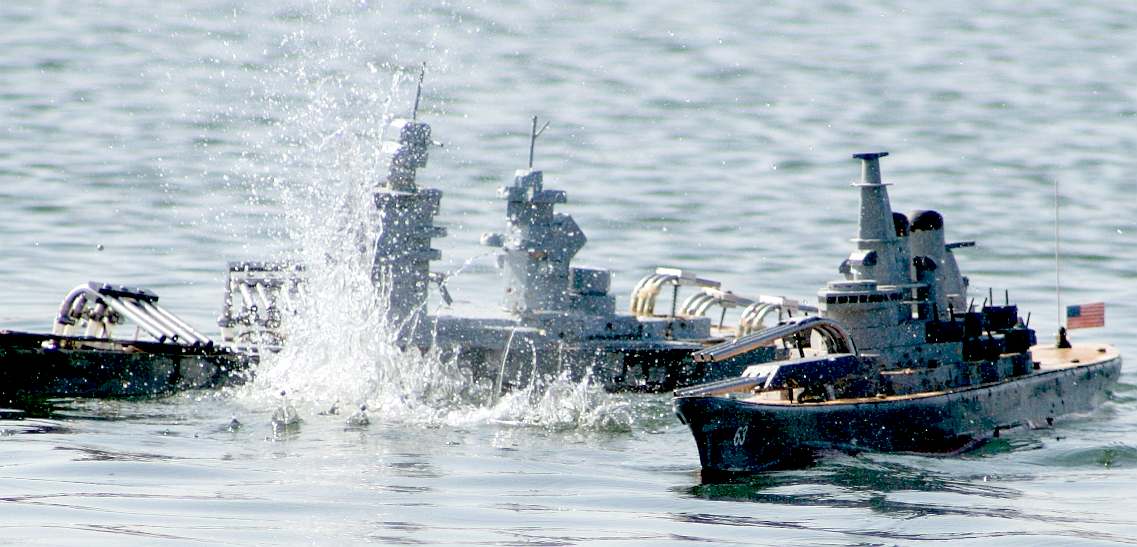
Richelieu and Missouri battle it out in a scale model simulation,
with some serious firepower being brought to bear using pneumatic ball
bearing firing cannons.
AIRCRAFT
CARRIER INDEX
Cavour
- Italy
Chakri
Naruebet - Thailand
Clemenceau
- France
Dokdo
- Republic Korea
Gerald
Ford Class - USA
Hyuga
- Japan
Invincible
- UK
Kuznetsov
- Russia
Liaoning
- China
Nimitz
- USA
Principe
de Asturias - Spain
Queen
Elizabeth - UK
Vikrant
Class - India
WARSHIPS
Bismarck
- Battleship - Germany
HMS
Neptune - Leander class cruiser 1941 WWII
Type
23 - Duke class frigate - UK
Type
26 - Global combat ship - UK
Type
45 - Daring class destroyer - UK
Electric
prototype - USA
SUBMARINE
INDEX
Alvin
DSV - Woods Hole Oceanographic Institution
Deepsea
Challenger - Mariana Trench, James Cameron 2012
HMS
Astute 1st of Class
HMS
Vanguard- Trident
INS
Sindhurakshak - explosion
& sinking
Littoral
combat vessels
Lusitania
- Torpedo
attack
Nuclear
submarines lost
at sea
Predator
- Covert submarine hunter/killer
Seawolf
- Autonomous wolf pack deployment of Predator mini-subs
Torpedoes
- UUV anti submarine weapons
Trieste
- World record depth - Mariana Trench 1960
U20
- Kapitan Leutnant Walther Schwieger
USS
Alabama -
USS
Bluefish WWI submarine
USS
Bluefish - Nuclear submarine
USS
Flying Fish
USS
Jimmy Carter - Seawolf class fast attack nuclear submarine
USS
Nautilus - 1st nuclear submarine & subsea north pole passage
USS
North Dakota - 11th Virginia class submarine
USS
Scorpion - Lost at sea with all hands
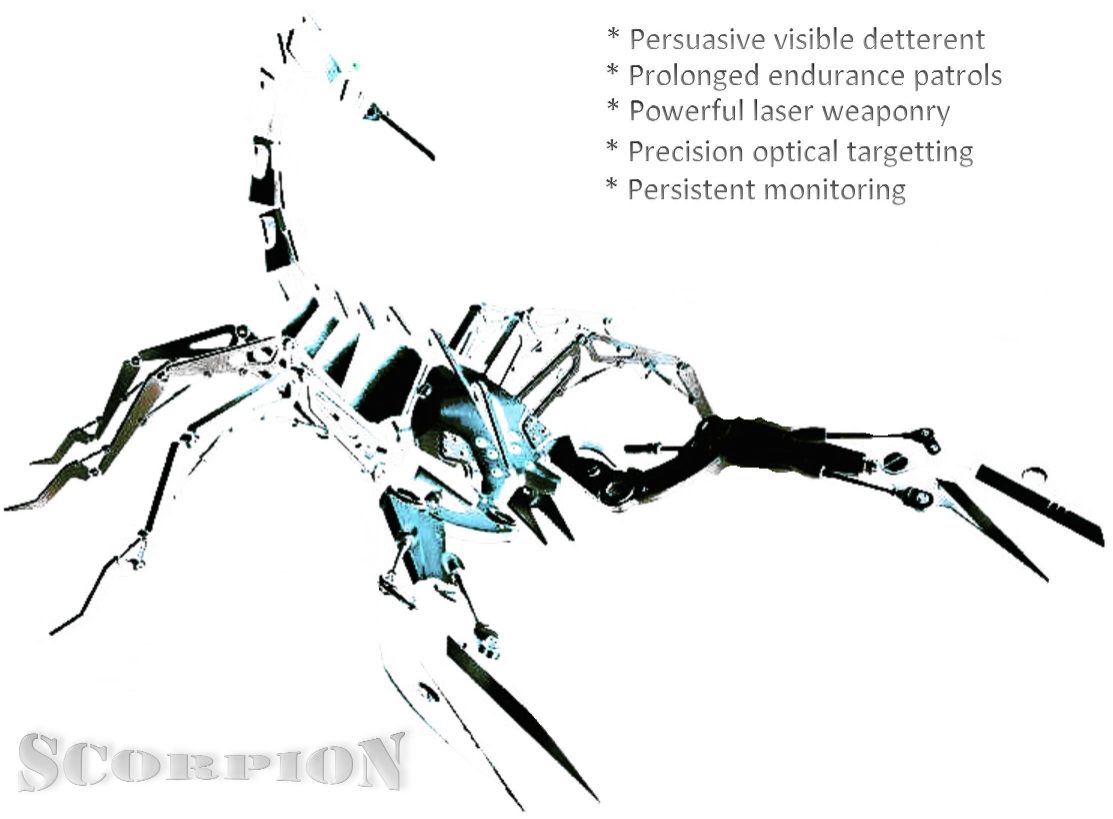
|
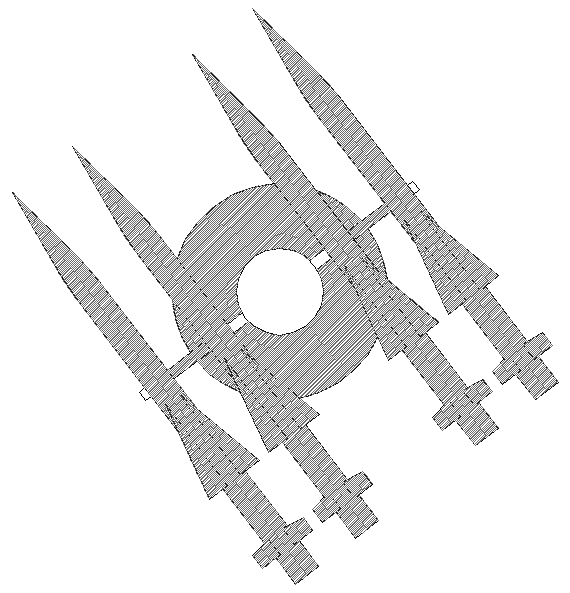
|
|

|

|
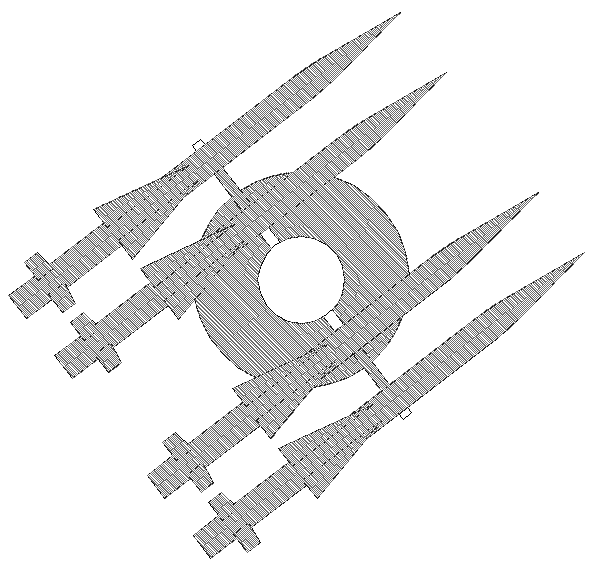
|
|
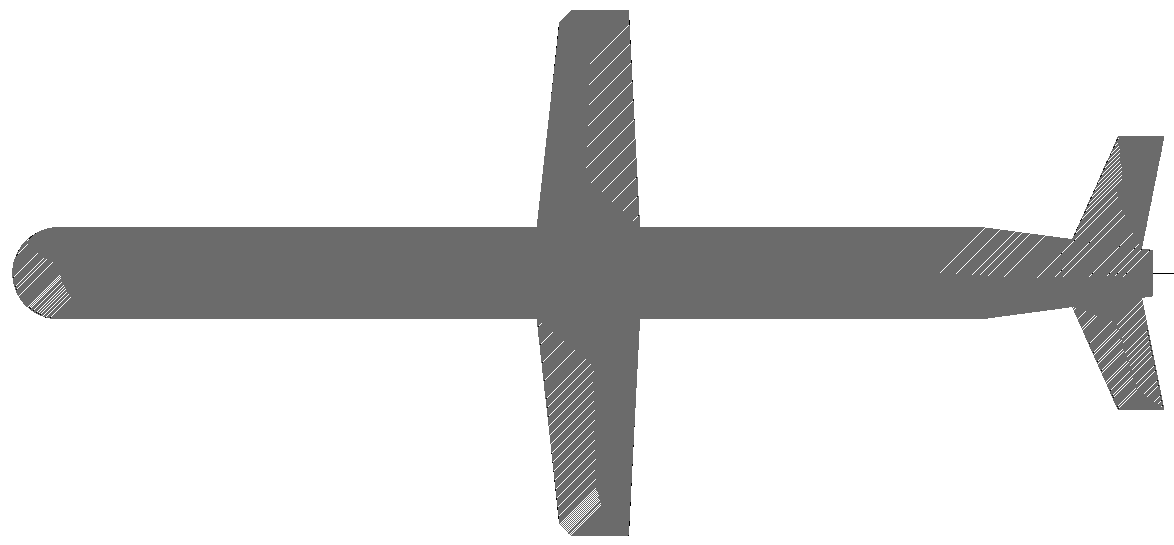
|
Starboard
8 SAMs forward & 8 aft + 2 cruise missiles & 2 torpedoes.
Carried
by a zero carbon fuelled for life platform.
|
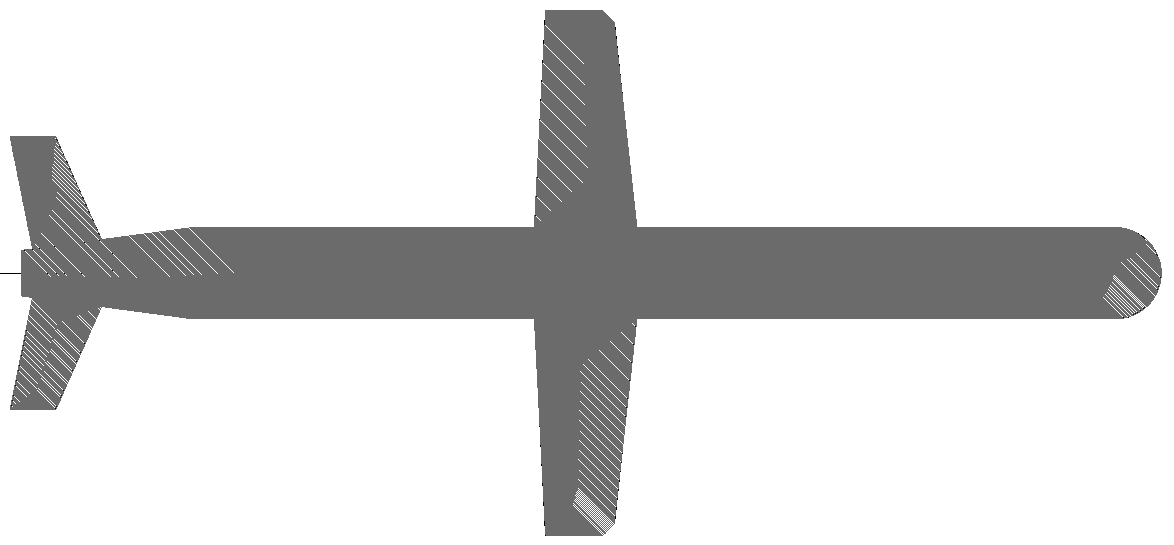
|
|
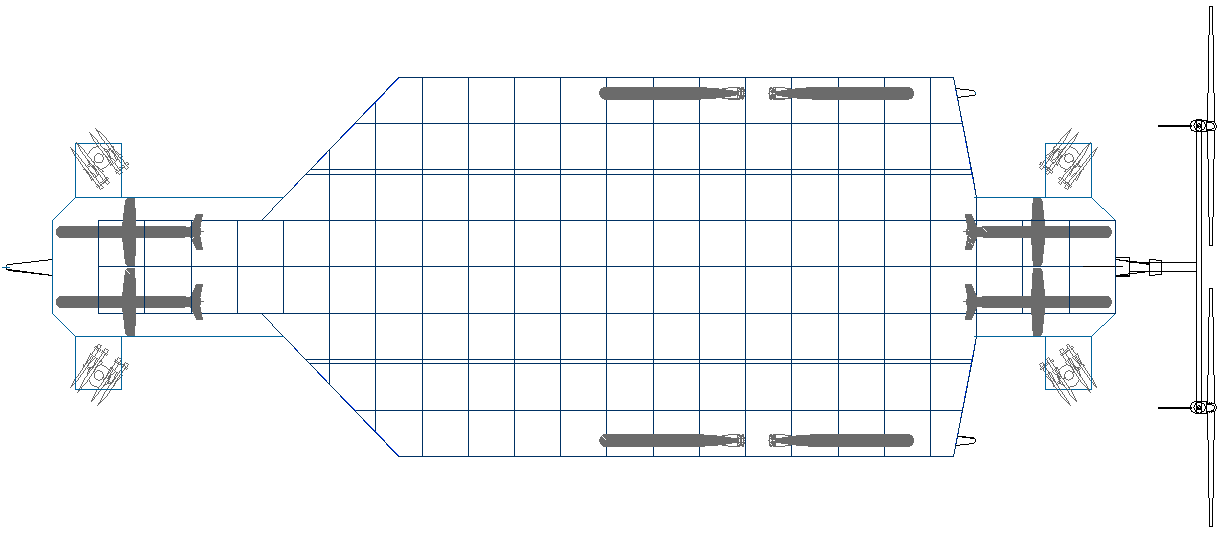
|
|

|
Port
8 SAMs forward & 8 aft + 2 cruise missiles & 2 torpedoes.
The
reaction time of a robot warrior is milliseconds. |

|
|
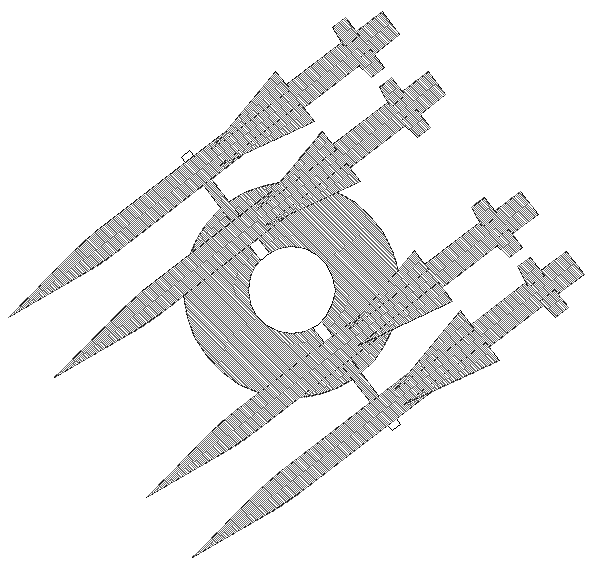
|
|

|

|
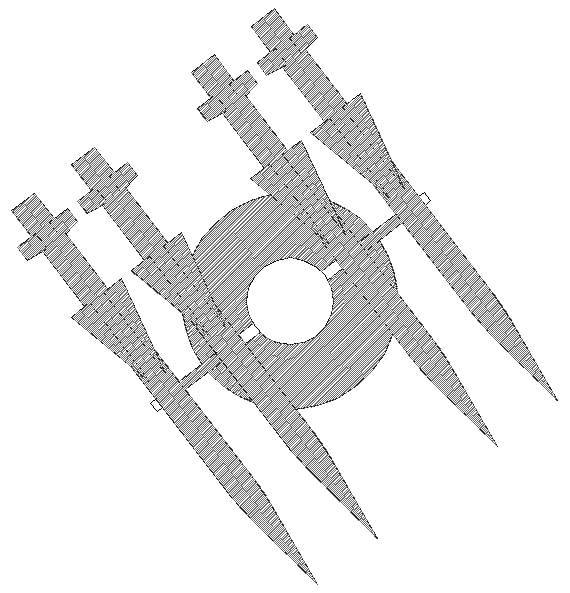
|
SEANET™
DRONE WARSHIP LAYOUT - A hammerhead Scorpion HK
destroyer is shown here fitted with 4 x SAM turrets (one per
quadrant with independent targeting), for 360 degree multiple cover. Each SAM turret carries 8 missiles (Rapier example),
giving a battery of 32 rockets to fend off enemy aircraft. This micro
battleship is also shown here with 4 Tomahawk cruise
missiles in protected bays, fore and aft, and 4 x 21" MK48 torpedoes
in the outriggers - all drawn to scale - as a prelude to proof of concept.
The torpedoes and cruise missiles would not be visible, but we've shown
them in x-ray. The OAL of this clever design in 1/20th scale is 2.64m or 8
feet 7 inches. This
original concept vessel is design copyright © BMS Ltd 2014.

LINKS
& REFERENCE
RCWarships.org
- Informational website dating back from 1995 and still going strong
Gun related.
R/C
Warship Combat Community Forum Supporting All Formats of model warship
combat.
IRCWCC
Main Site Fast Gun
MWC
official site Fast Gun
North
Texas Battle Group site 1/144 Big Gun
Australian
Battle Group site 1/144 Big Gun
Western
Warship Combat Club site 1/144 Big Gun
Chesapeake
Battle Group Group site 1/144 Big Gun
Battlestations!
1/96 Big Gun
Mid-Atlantic
Battle Group site 1/144 Big Gun
Queen's
Own Scale Model Warship Club 1/48, 1/72 Big Gun
Robotic
Warship Combat at Maker Faire 1/144 Big Gun
Washington
Cascade Column Seattle Area 1/144 Fast-Gun
http://washingtontreatycombat.webs.com/index.htm
http://www.combatenaval.com.ar
Big
Gun History of Torpedo Development
Arizona
Cannon
Single
Barrel Gun System
JC
White Cannon
JC
White derived Torpedo Cannon diagram
Jam
Elbow Cannon
Negative
Pressure/Exhaust Valve
Piston
Interruptor
Interrupter
Piston Adjustment
Spring
Loaded Breech
Cannon
Rotation demonstrated for Indiana Style Cannon
North
American Big Gun Open
Big
Gun Robotic Warship Combat open invitational at California Maker Faire
History
of Big Gun Combat
NASWCA
History by Paul Fleming
Wikipedia
Naval_wargaming
Wikipedia
Model_warship_combat
Robots
tockpile
wl-toys-v959-quadcopter-future-battleship-gatling-machine-gun-with-onboard-camera
RC-submarines
torpedoes
PT
boat contra rotating electric torpedo
Sub
Committee
The
Guardian June 2003 Terrorism David Fickling
Raytheon
Aardvark
DIY cruise missiles
BBC
World news asia-pacific DIY cruise missile from New Zealing
Hackaday
2010 diy guided missile err model rocket
Sites
google airwavershr guided rocket
Wikipedia
Servo radio_control
Wikipedia
Pan tilt zoom_camera
Raspberry
pi spy pan and tilt mechanism for the raspberry camera
Wikipedia
MIM-3_Nike_Ajax
National
Association of Rocketry
UK
Rocketry Association
British
Model Flying Association
http://en.wikipedia.org/wiki/Naval_wargaming
http://en.wikipedia.org/wiki/Model_warship_combat
https://www.bmfa.org/
http://www.nar.org/
http://www.ukra.org.uk/
http://en.wikipedia.org/wiki/MIM-3_Nike_Ajax
http://en.wikipedia.org/wiki/Pan%E2%80%93tilt%E2%80%93zoom_camera
http://www.raspberrypi-spy.co.uk/2013/09/pipan-pan-and-tilt-mechanism-for-the-raspberry-pi-camera/
http://en.wikipedia.org/wiki/Servo_%28radio_control%29
https://sites.google.com/site/airwavershr/Home/guided-rocket
http://hackaday.com/2010/08/03/diy-guided-missile-err-model-rocket/
http://aardvark.co.nz/pjet/cruise.shtml
http://news.bbc.co.uk/1/hi/world/asia-pacific/3302763.stm
http://www.subcommittee.com/
http://www.rc-submarines.net/torpedoes.html
http://www.pt-boat.com/torpedo/torpedo.html
BLUEFISH
DEVELOPMENT PROJECT INDEX A-Z
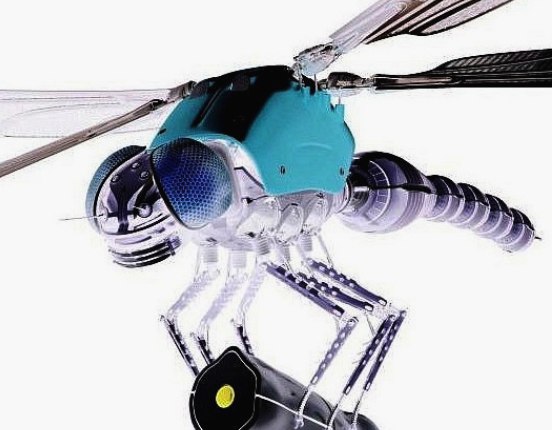
|









